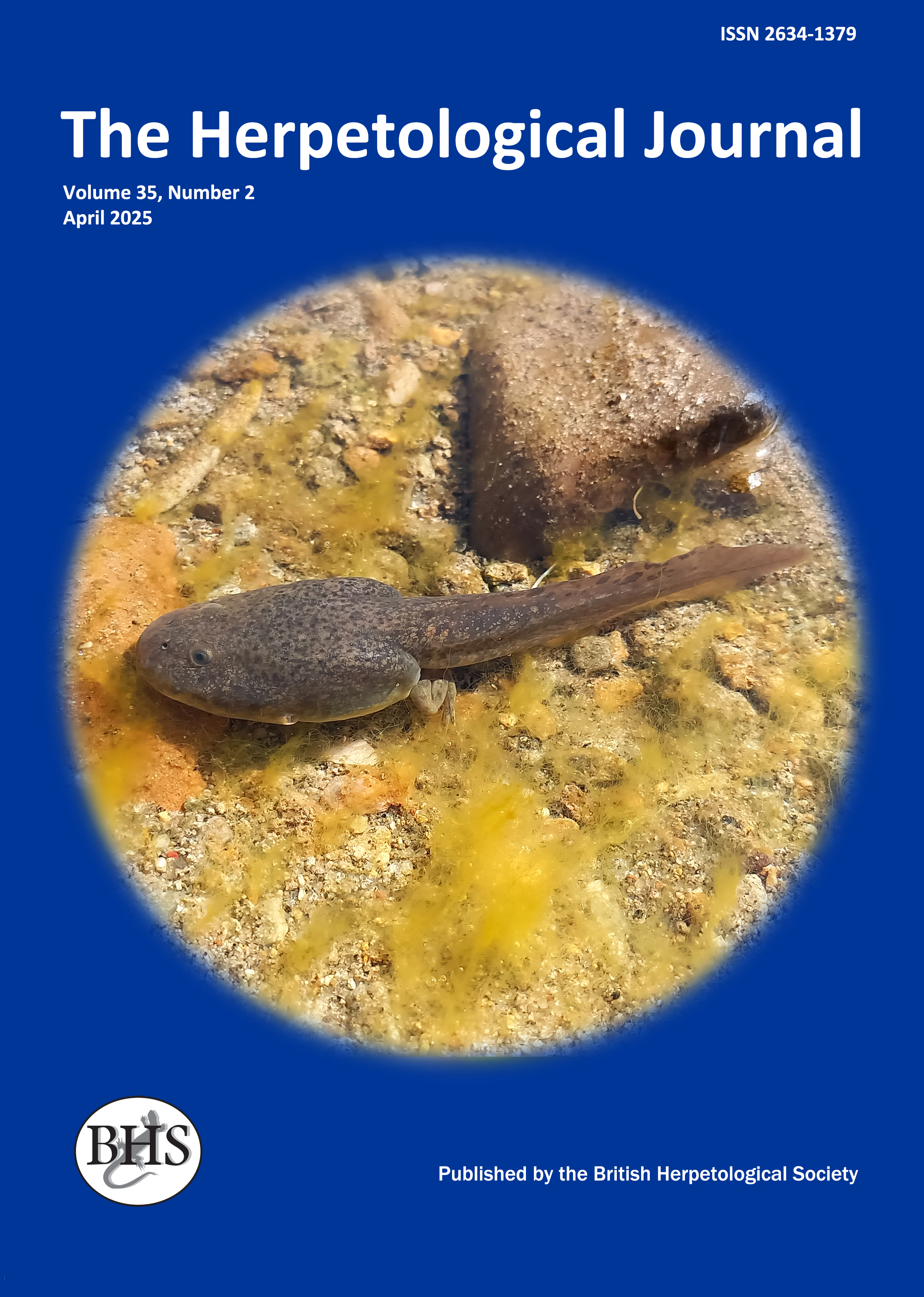
The Herpetological Journal
The Herpetological Journal is the Society's prestigious quarterly scientific journal. Articles are listed in Biological Abstracts, Current Awareness in Biological Sciences,Current Contents, Science Citation Index, and Zoological Record.
ISSN 0268-0130
2021 Impact Factor from Clarivate for the Herpetological Journal is 1.194, an increase of 0.332 from 2020.
pdf 05. Spatial ecology of the Endangered and endemic Sagalla caecilian Boulengerula niedeni in the Eastern Arc Mountains of Kenya
424 downloads
Open Access
DOI: https://doi.org/10.33256/34.3.163171
pp. 163-171
Authors: David B. Marquis, Basil L. Mashanga, Benjamin Tapley, Oliver R. Wearn, Olivia Couchman, Rikki Gumbs, Claudia Gray, Nisha Owen & Marcus Rowcliffe
Abstract: Caecilians (Order Gymnophiona) are generalist predators of soil invertebrates, and may therefore play an important role in tropical soil ecosystems. However, their fossorial lifestyle and the associated difficulties in surveying them have caused a deficit in data for the majority of species. We applied a systematic approach and an intensive sampling strategy to an Endangered and evolutionarily distinct caecilian from the Eastern Arc Mountains, the Sagalla caecilian Boulengerula niedeni. We investigated the association between habitat type and caecilian occupancy across its entire range, the Sagalla Hill, Kenya, and explored the relationship between several variables (land use type, surface soil temperature, soil compactness and landowner prediction of caecilian presence) and its presence in different habitats. We found no significant effects of any of the investigated variables in predicting caecilian presence across the Sagalla landscape. Instead, our findings suggest that the species survives at least as well in agricultural landscapes as it does in areas with indigenous vegetation, with an estimated density of around 900 caecilians per hectare. A bimodal distribution of sizes and weights of captured specimens suggests ongoing successful breeding and recruitment. This suggests that there is a case for cautious optimism with regard to the status of B. niedeni. Our work could act as a useful pilot for further, improved caecilian surveys in the Eastern Arc Mountains and beyond, to improve our understanding and conservation of these overlooked fossorial amphibians.
Keywords: amphibian, Gymnophiona, Herpelidae, soil ecology, amphibian conservation, Taita Hills

